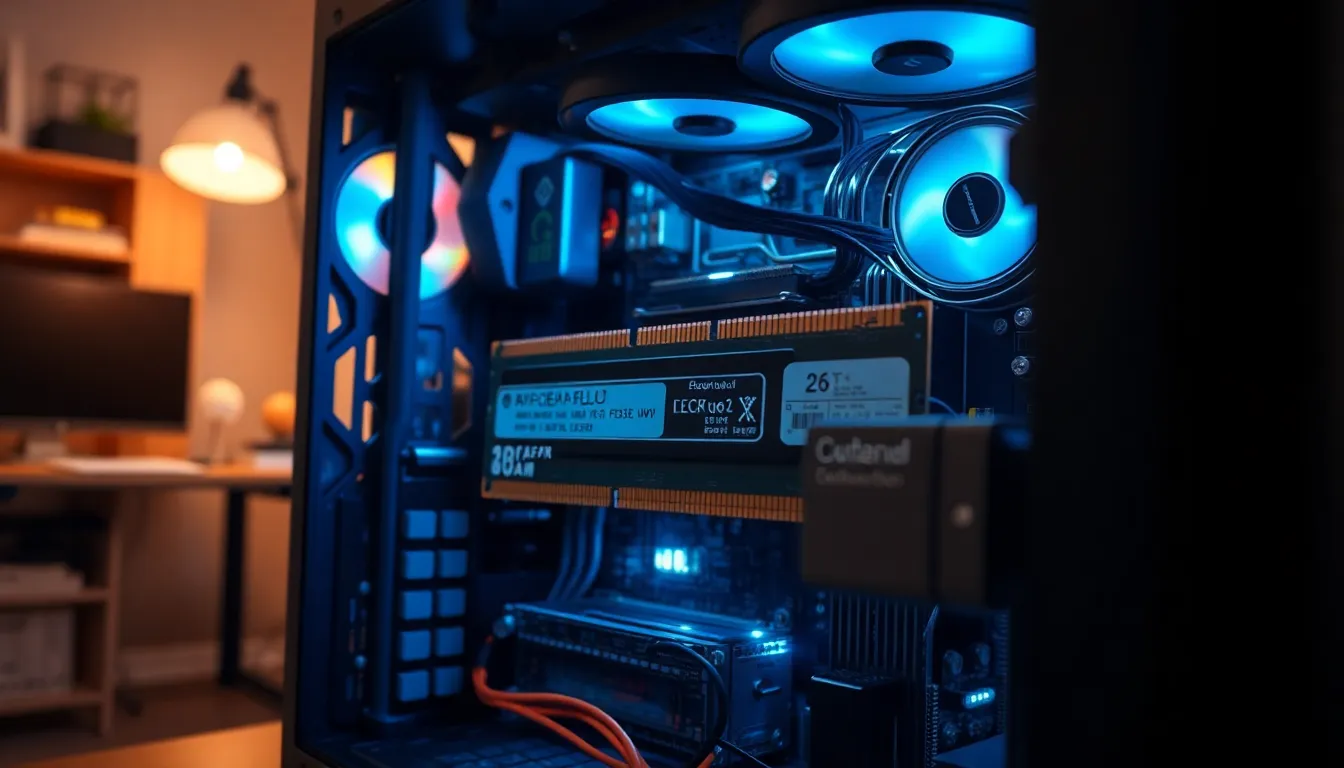Table of Contents
TogglePicture this: you’re deep into an important project, and suddenly, your screen turns an ominous shade of blue. The infamous Blue Screen of Death strikes again, and this time it’s waving a flag labeled “Memory Management.” It’s like a surprise party you didn’t want, and the guest of honor is your computer’s sanity.
Understanding the Blue Screen of Death
Encountering the Blue Screen of Death (BSOD) signifies serious issues within a computer’s operating system. It often appears suddenly, leaving users frustrated and confused. When the screen displays “Memory Management,” it indicates a critical problem with the system’s RAM or memory allocation.
Memory management errors typically stem from faulty hardware or corrupted system files. They can disrupt ongoing workflows, leading to potential data loss. Users must address these errors quickly to restore system functionality.
Determining the root cause involves several troubleshooting steps. First, checking for loose RAM modules or improperly seated components may reveal physical issues. Next, running memory diagnostic tools helps identify malfunctioning memory segments. Windows Memory Diagnostic and MemTest86 serve as effective tools for this purpose.
Analyzing recent changes to the system also benefits troubleshooting efforts. Newly installed software or drivers sometimes conflict with existing ones, leading to these errors. Rolling back software updates can often resolve issues.
Regular maintenance practices enhance computer stability. Keeping system drivers updated prevents compatibility conflicts. Performing disk cleanups and managing temporary files contribute to optimal performance.
For persistent issues, considering a system restore or reset could provide solutions. Both actions revert the system to a previous state, often alleviating BSOD occurrences. By following a structured approach, users can effectively manage and resolve memory-related BSOD problems.
Common Causes of Memory Management Issues

Memory management issues frequently stem from specific problems that disrupt computer performance and stability. Identifying these root causes helps in addressing errors effectively.
Faulty Hardware
Faulty hardware often leads to memory management errors. Issues with RAM can manifest as instability during operation, which causes blue screens. Damaged RAM modules may not store or retrieve data correctly. Users should check for loose or improperly seated memory sticks. Testing memory using diagnostic tools like Windows Memory Diagnostic can reveal underlying hardware problems. In cases where hardware failures are confirmed, replacing the faulty components becomes necessary.
Corrupted Drivers
Corrupted drivers present another significant cause of memory management errors. Incorrect or outdated drivers can conflict with system memory operations, resulting in instability. Users should regularly update drivers to ensure compatibility with the operating system. Moreover, new software installations might inadvertently cause driver conflicts. Analyzing recently updated or added drivers can help identify the source of the problem. Rolling back drivers to previous versions may also resolve issues linked to memory management errors.
Diagnosing Memory Management Problems
Diagnosing memory management issues is essential for restoring system stability. Various tools assist in identifying the underlying causes of these errors.
Using Built-in Windows Tools
Windows offers several built-in tools for diagnosing memory management problems. Memory Diagnostic Tool quickly analyzes the computer’s RAM, detecting errors during startup. Users can access it by typing “Windows Memory Diagnostic” in the search bar. Another option is the System File Checker, which scans for corrupted system files and replaces them if necessary. Running this tool requires opening the Command Prompt as an administrator and entering “sfc /scannow”. These built-in tools help pinpoint issues related to memory and can lead to effective solutions.
Third-party Diagnostic Software
Third-party diagnostic software provides additional options for diagnosing memory problems. MemTest86 is a widely used application that conducts thorough tests on RAM, providing detailed reports on errors and performance. Users can create a bootable USB drive to run this software independently of the operating system. Another popular choice is HWiNFO, which monitors hardware performance, including memory utilization and potential errors. By utilizing these third-party tools, users can gain deeper insights into their system’s memory health, aiding in effective troubleshooting.
Solutions for Blue Screen of Death Memory Management
Addressing memory management issues leading to the Blue Screen of Death requires immediate action. Users can implement several strategies to restore system stability.
Checking for Hardware Issues
Identifying hardware problems plays a crucial role in resolving memory management errors. Inspecting RAM modules for physical damage or loose connections often reveals underlying issues. Testing individual RAM sticks in different slots can help determine if a specific module is faulty. Running built-in tools like Windows Memory Diagnostic checks for memory integrity and flags potential errors. If hardware problems are confirmed, replacing defective components may be necessary to prevent further BSOD occurrences.
Updating Drivers and Software
Keeping drivers and software updated significantly reduces the risk of memory management issues. Downloading the latest drivers from the official manufacturers ensures compatibility and stability. Users should regularly check for updates to operating systems and installed applications, as these often include critical patches. Uninstalling problematic software or drivers also plays a part in maintaining system health. Utilizing utilities to automate driver updates can streamline this process, minimizing the chances of encountering BSOD errors due to outdated software.
Addressing memory management errors that lead to the Blue Screen of Death is crucial for maintaining computer health. By understanding the underlying causes and implementing effective troubleshooting strategies, users can significantly reduce the likelihood of encountering these frustrating issues. Regular maintenance practices such as updating drivers and performing system diagnostics play a vital role in ensuring stability.
When faced with persistent problems, investigating hardware components and utilizing diagnostic tools can provide valuable insights. Taking proactive steps to manage memory effectively will not only enhance system performance but also safeguard important data from potential loss.




